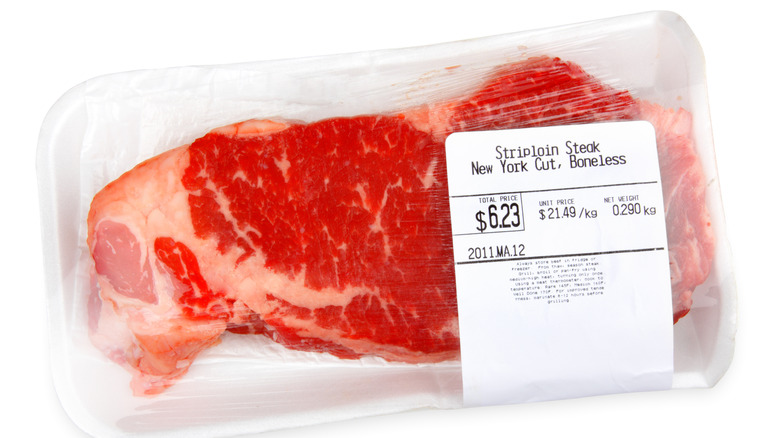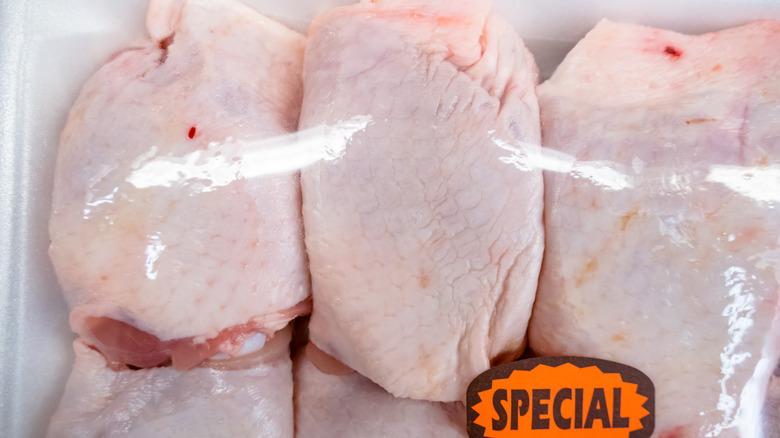There's No Need To Worry If Your Vacuum-Sealed Meat Smells A Bit Sour
There are all sorts of ways to tell if meat has gone bad — "is it dark green" is a pretty good one — but smell has always been the most reliable component to telling if something is safe to eat. "The Smell Test" exists for a reason; usually with food, if something smells bad, it's a sign you should stay away from it.
But, sometimes that test doesn't quite work even though it feels like it should. Sometimes pesky science gets in the way and explains that even though something smells off, it's still perfectly safe to eat. You may have bought some vacuum-sealed meat from the grocery store before, only to take it home, open it, and notice an odd, slightly sour smell. Here's the thing, though: Your grocery store wasn't selling expired meat as new, and if you threw it out, you were probably wasting perfectly edible meat. There's a good reason it smells like that: lactic acid.
That sour smell is actually a sign the meat is healthy
As bizarre as it may sound, it's actually a very good sign if your meat has a bit of a sour or sulfuric odor. When the protein in question gets packed in tightly with its own juices, lactic acid buildup occurs inside the package, creating a funny smell in the trapped air that imbues the meat itself. It's not a sign your meat has gone bad; it's a sign the seal was actually tight and clean.
Now, by the same token, if you're seeing a lot of juices in the package (so much so that the absorbent pad can't handle them), that could be a sign of improper storage. But, when it comes to the smell, the good news is that it shouldn't last for long; after about half an hour, it should be totally gone. If it isn't ... well, that's when you might actually have a problem on your hands.
If the smell lasts for half an hour, you should beware
If the smell is due to lactic acid building up, it'll go away; since it's the acid giving off the smell into a confined pocket of air, once the air pocket is removed, the smell will eventually also dissipate. If it isn't, that's a sign the meat actually is bad.
Fortunately, there are other ways to tell this, too. Expiration dates may generally not be 100% accurate, but you can use them in a pinch (as long as you're not relying on them exclusively). If the seal on the package feels loose before you remove it, that's also a warning sign. Excessive juice in the package is, as noted, a potential breeding ground for bacteria. And most importantly, the texture is key: If your meat is slimy, it's a very bad sign.
Ultimately, telling whether food is still good isn't an exact science in which you can rely on one testing factor; you have to use multiple senses to figure it out for yourself. Check things out from multiple angles and you'll ultimately waste less food. The FDA also has a simple mantra which is probably best to follow: "When in doubt, throw it out."


